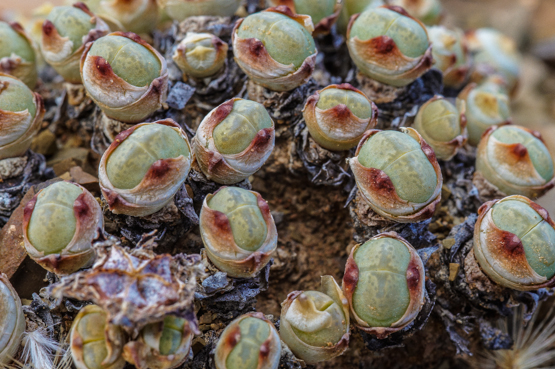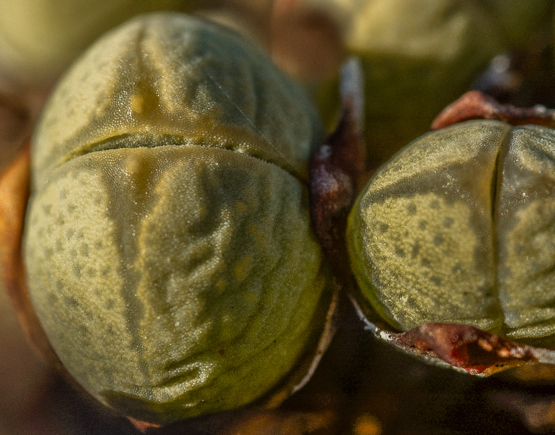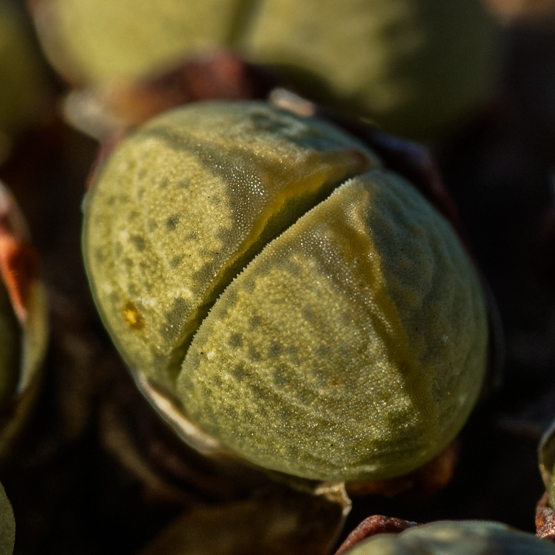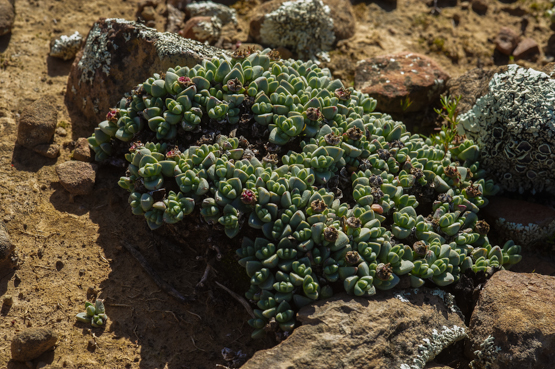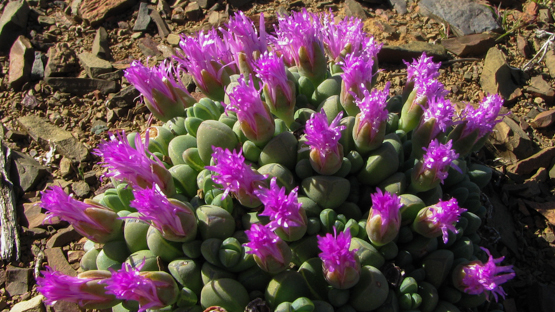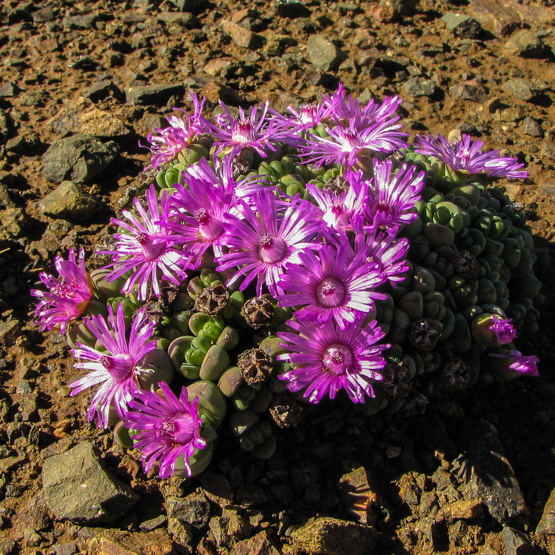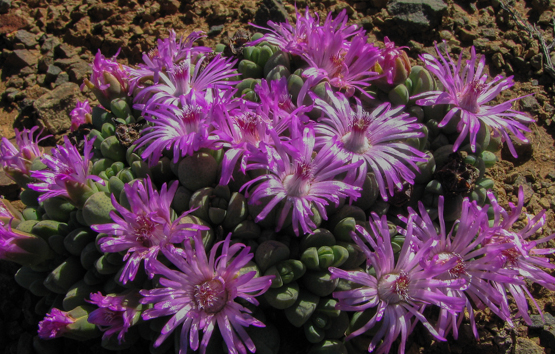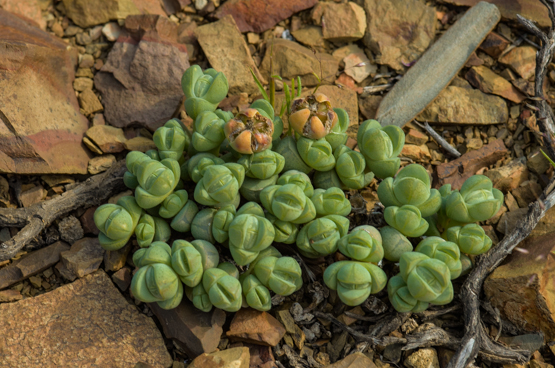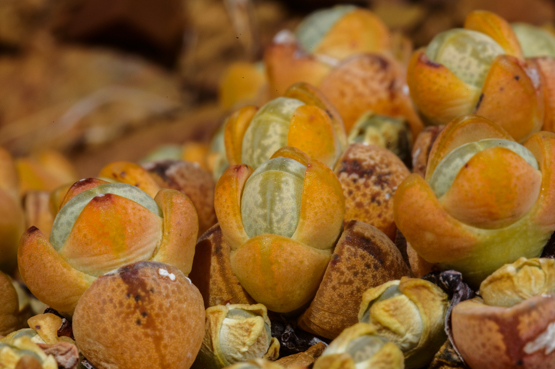Although this species sometimes occurs in big colonies, it is nevertheless rather rare, as a result of the limited distribution area (along the border of the winter rainfall area, more or less in the Ceres-Sutherland-Laingsburg triangle). With leaves about a centimeter long, it really lives up to its name (pumila = dwarf).
The difference in appearance between plants in the resting and the growing period is so great that Louisa Bolus described the species twice within two years (as Ruschia pumila and R. levynsiae).
The pictures shown here will hopefully give you a good idea how much the plants change in a couple of months.
The first picture was made at the end of April (= Autumn) and the last one mid November (end of Spring). The flowering plants were photographed end of July-beginning of August.
